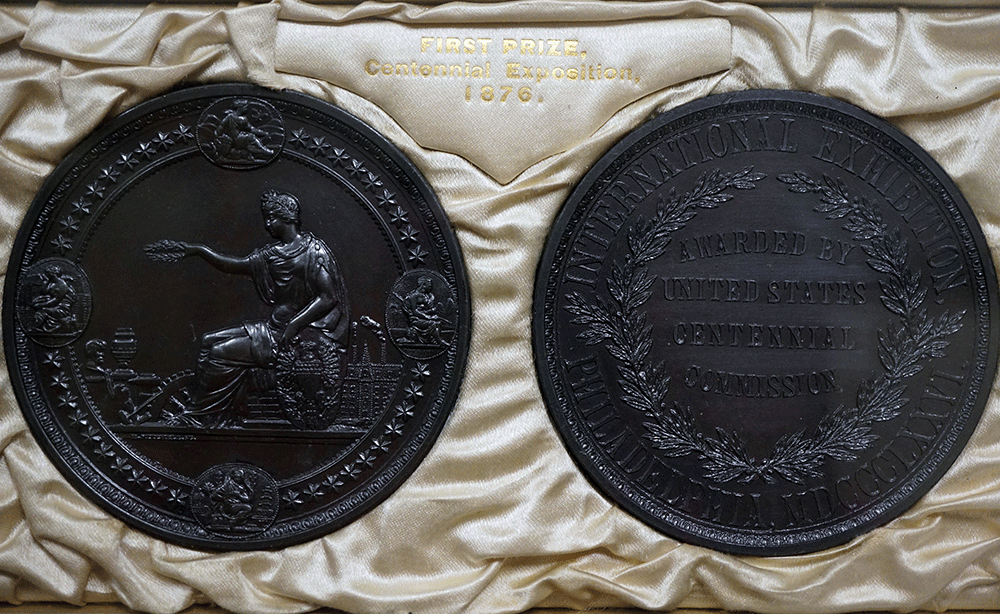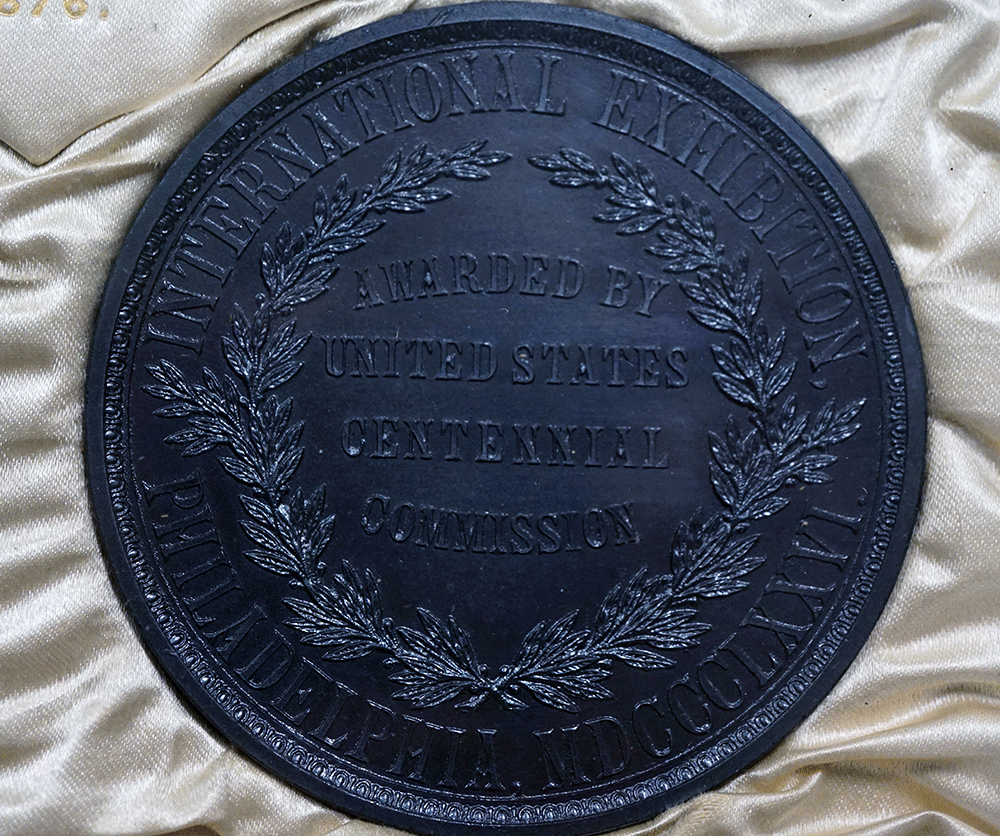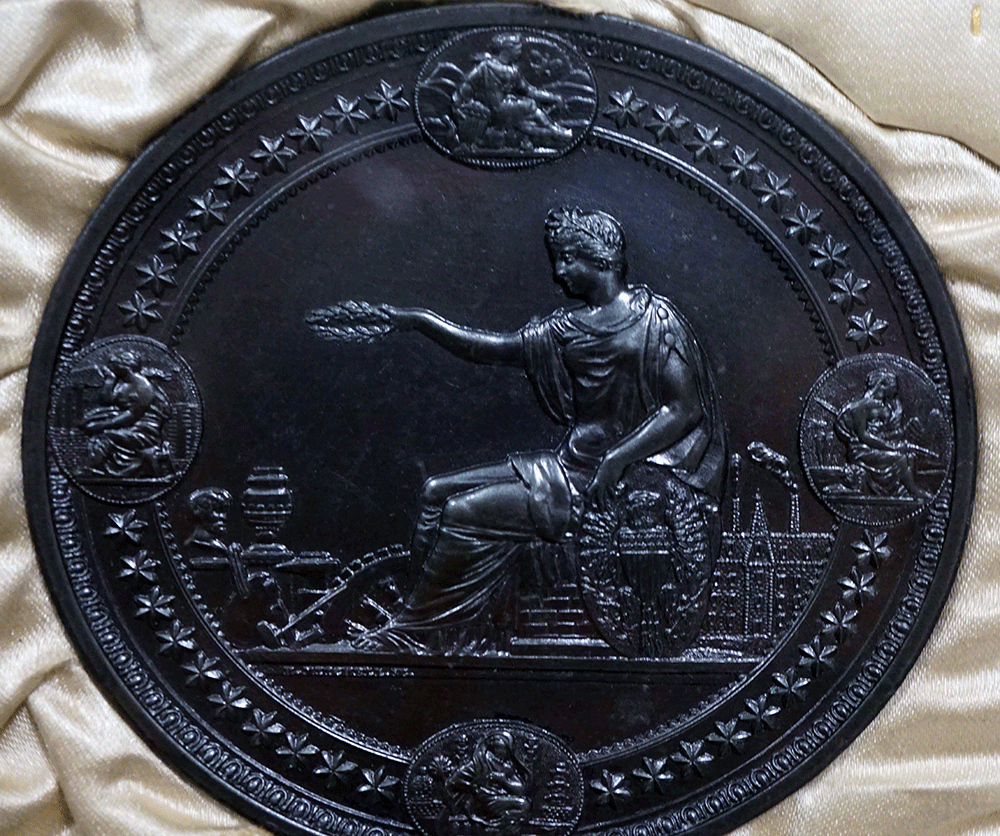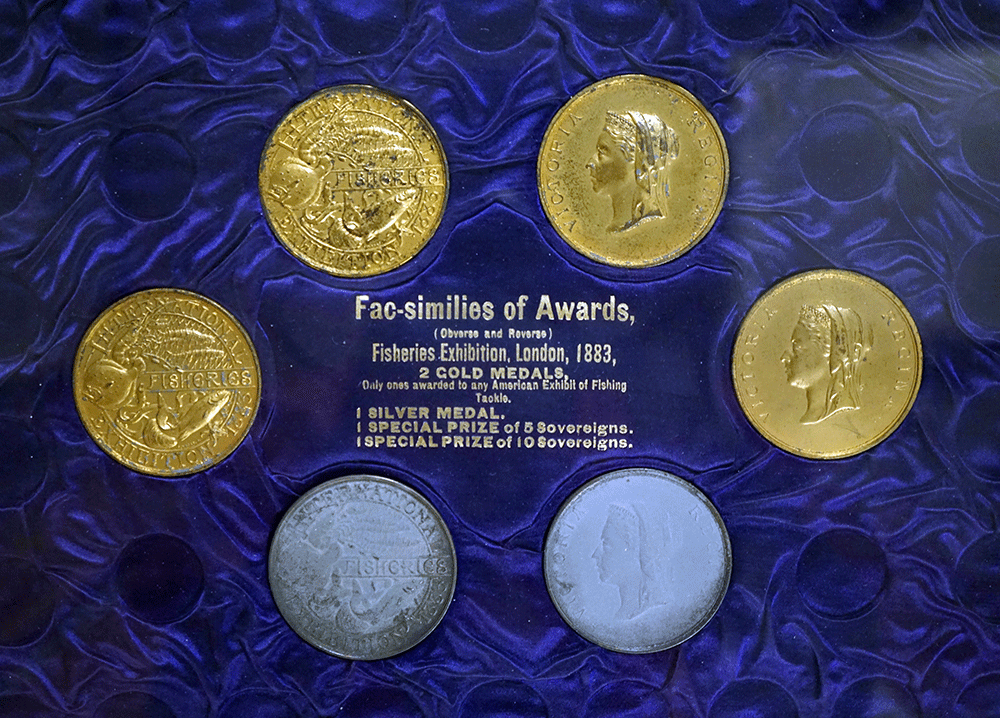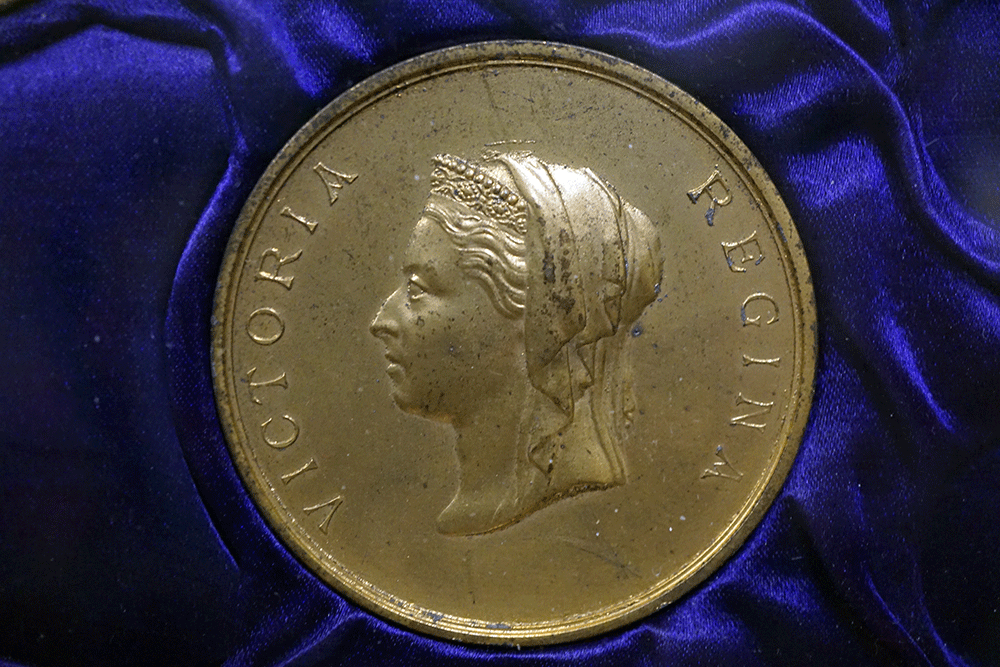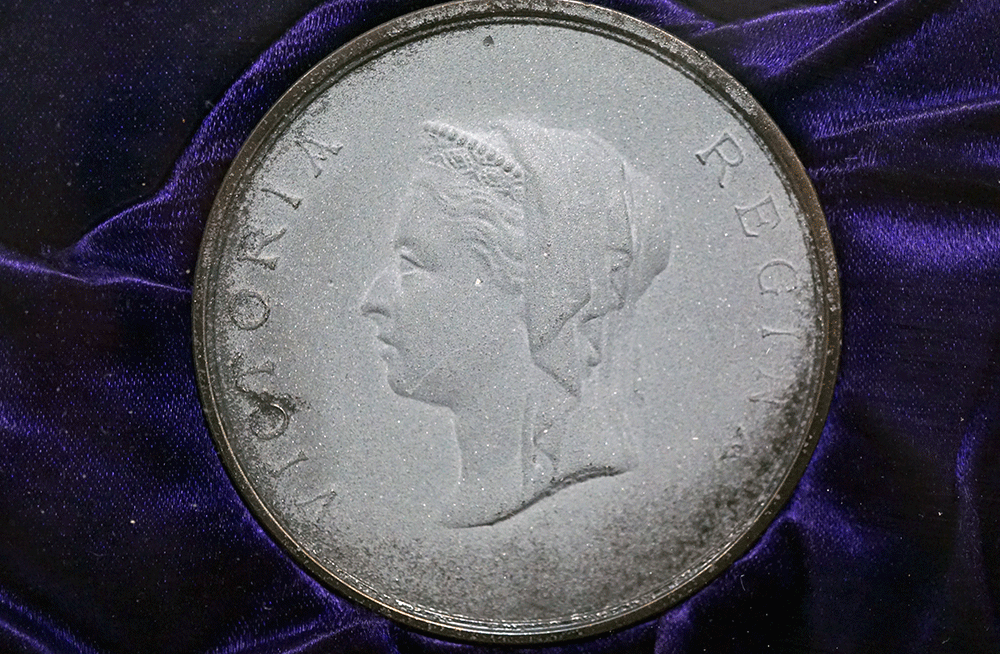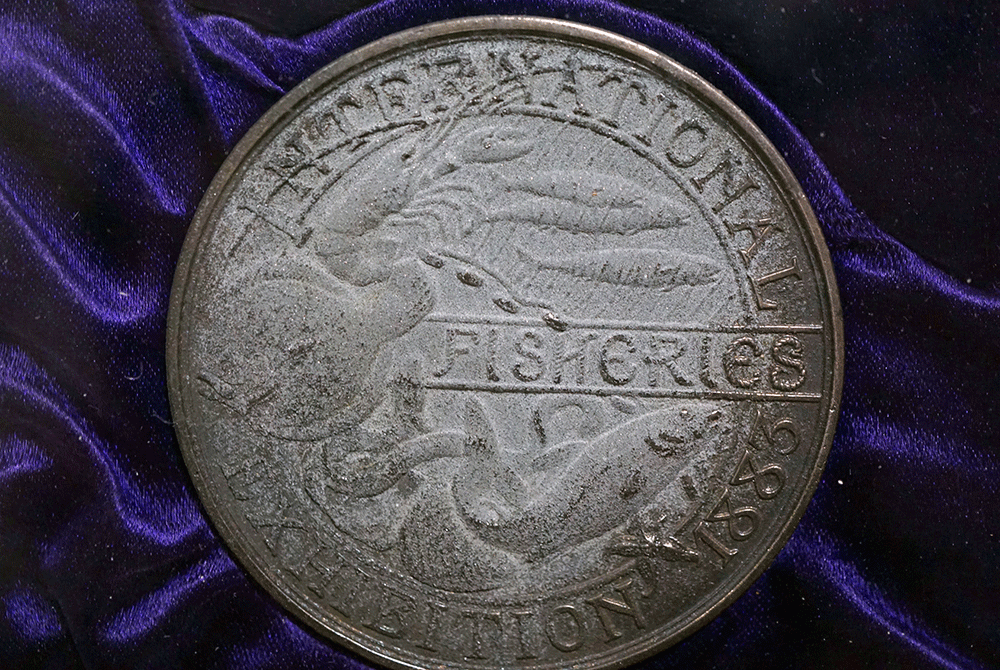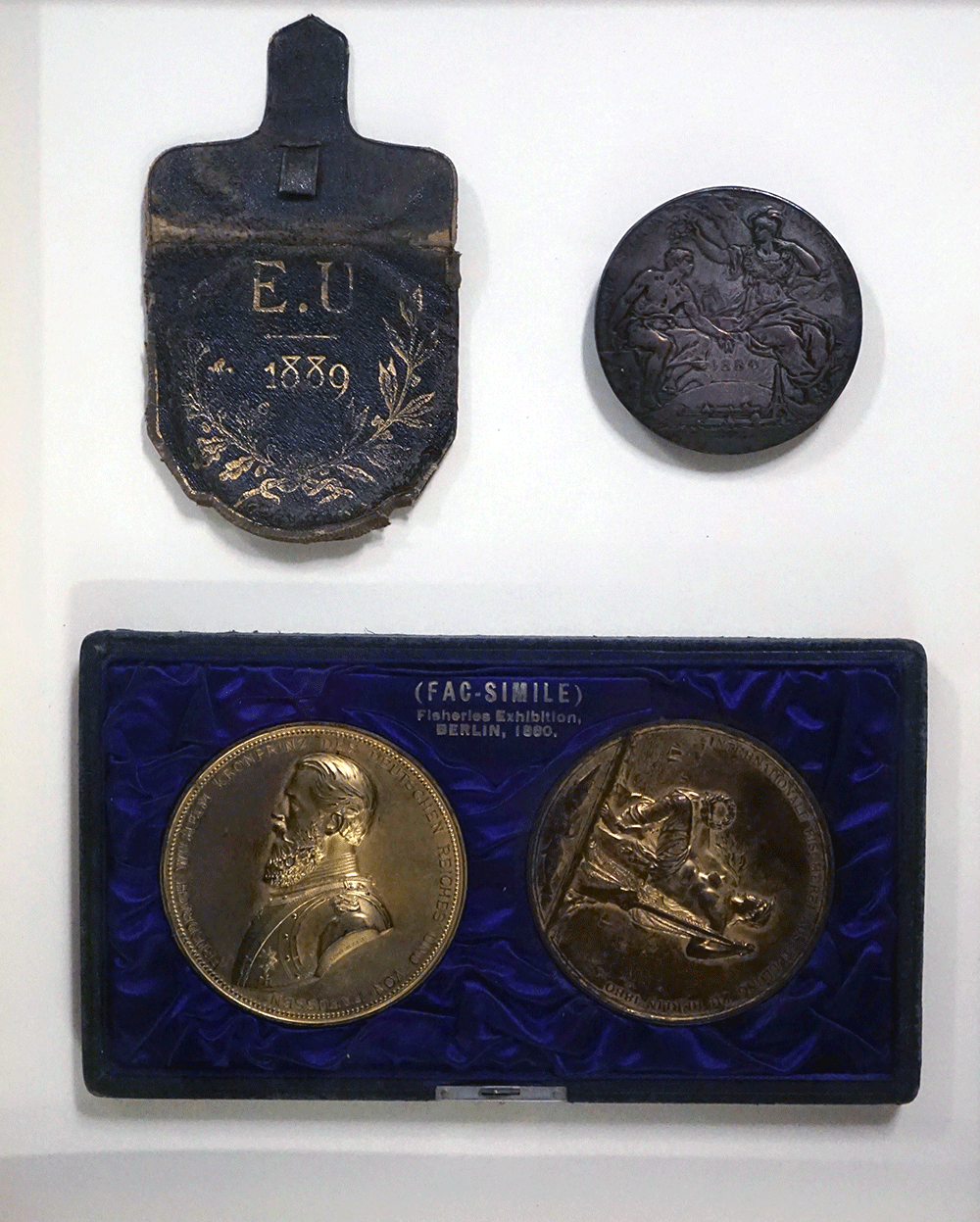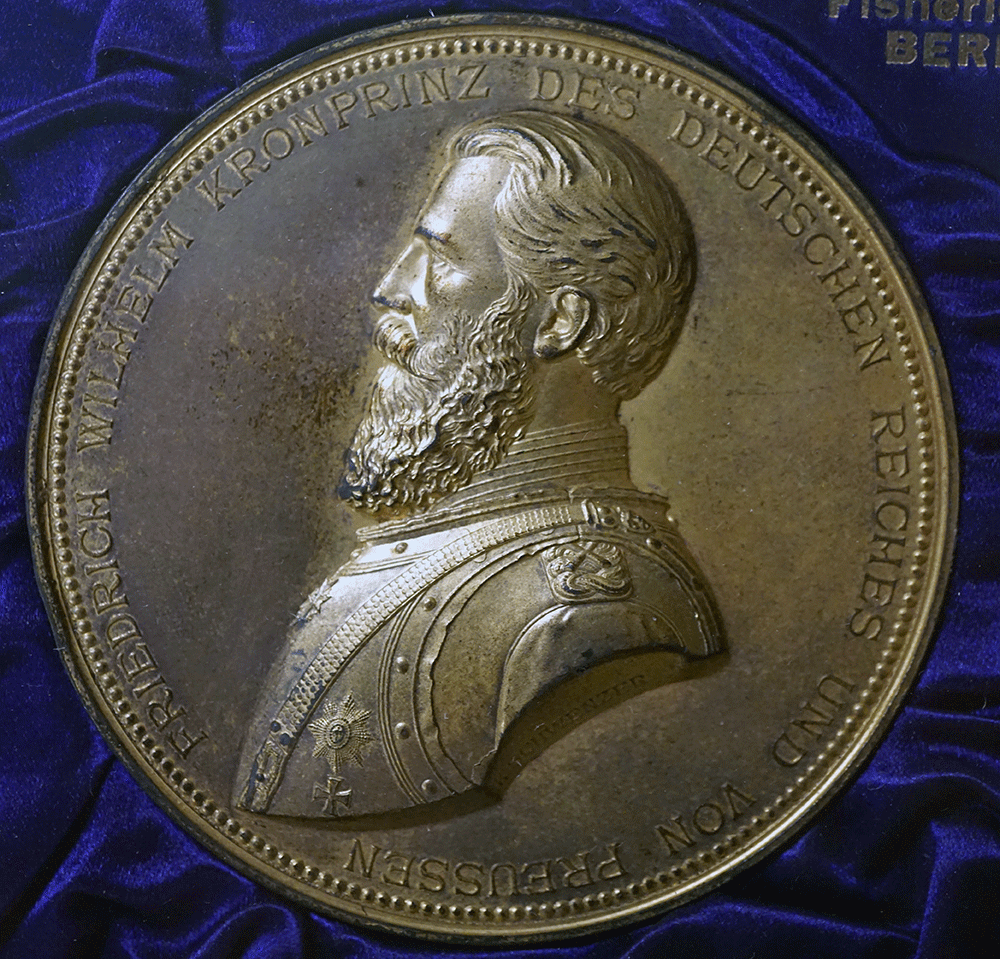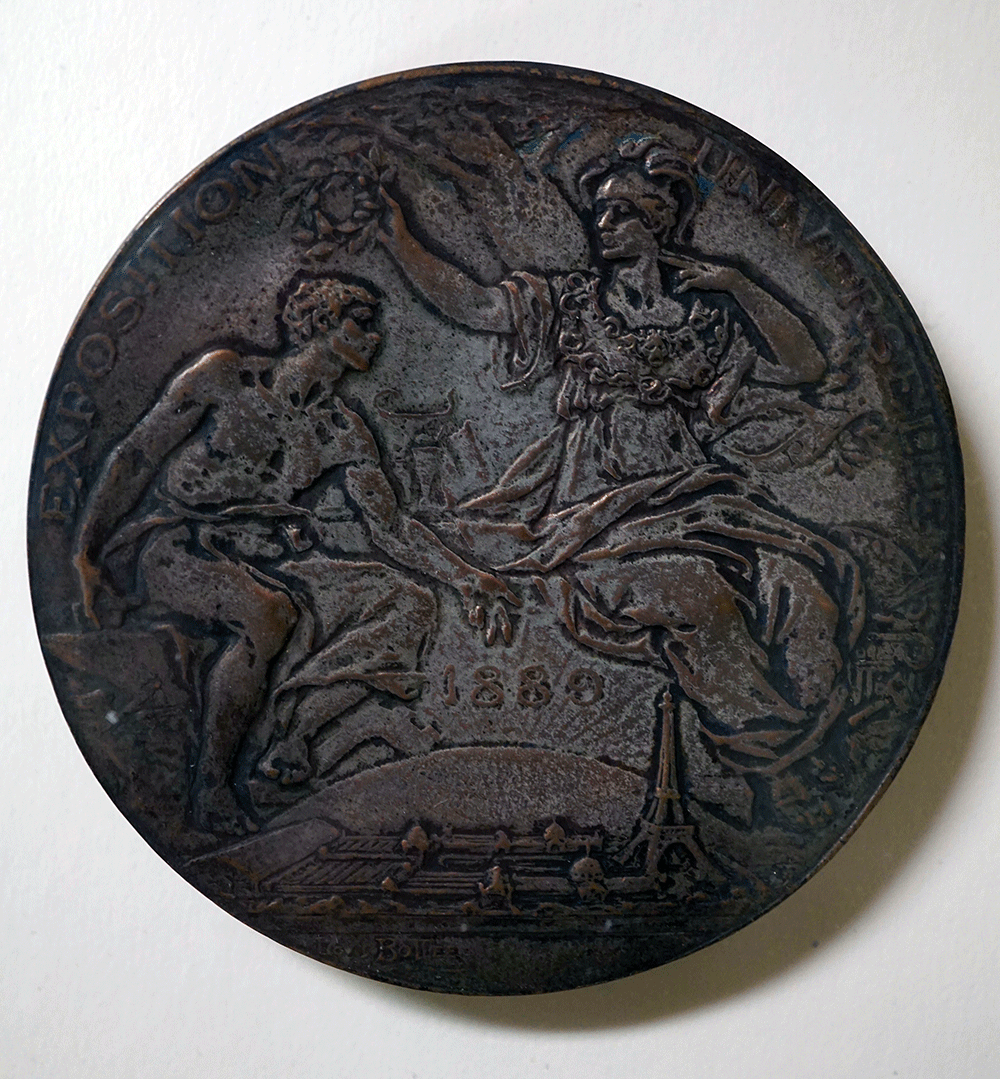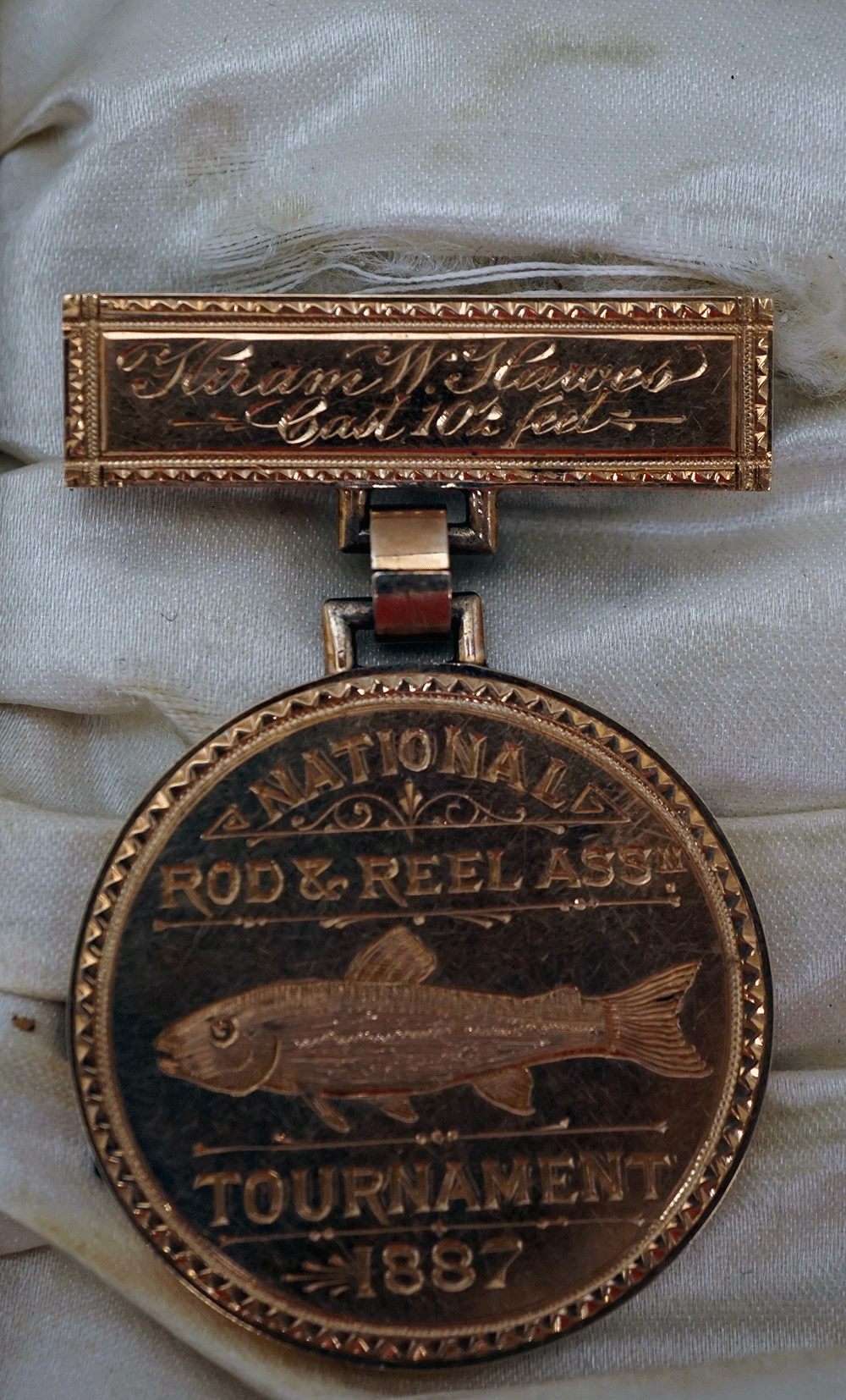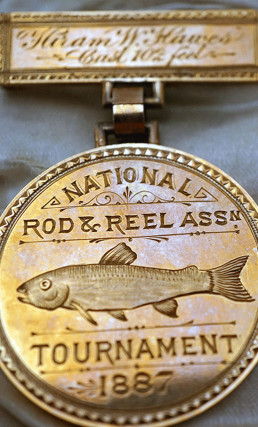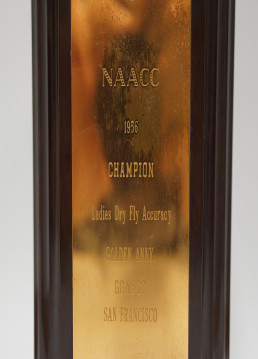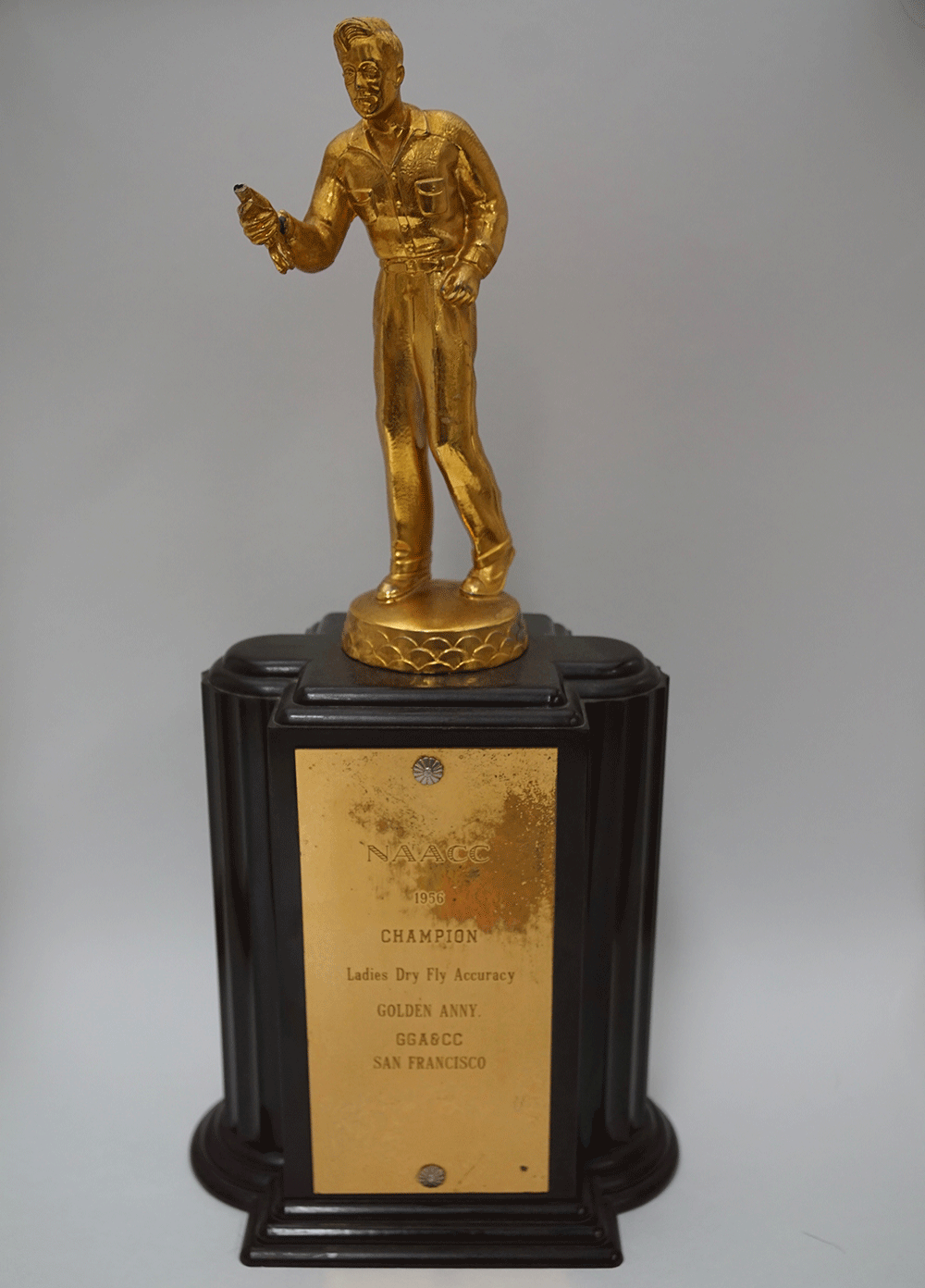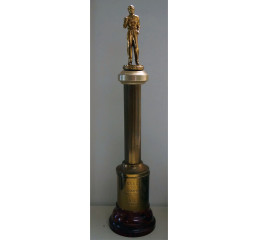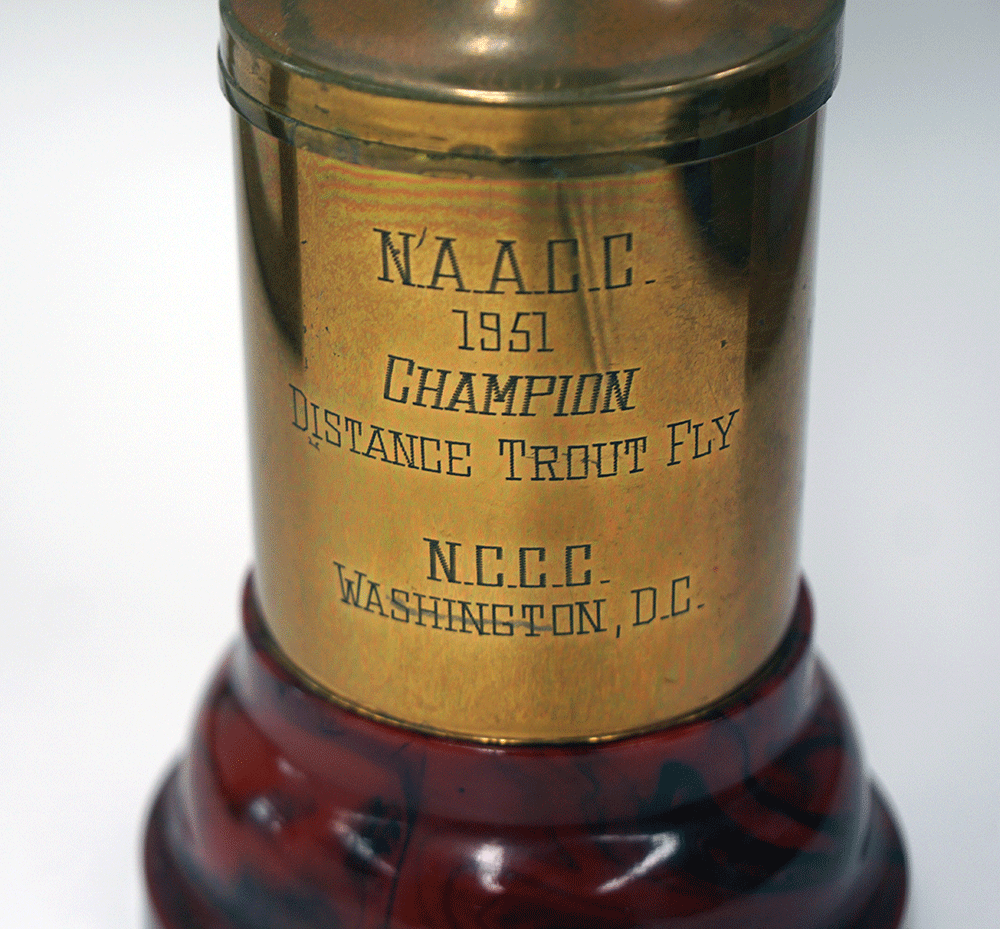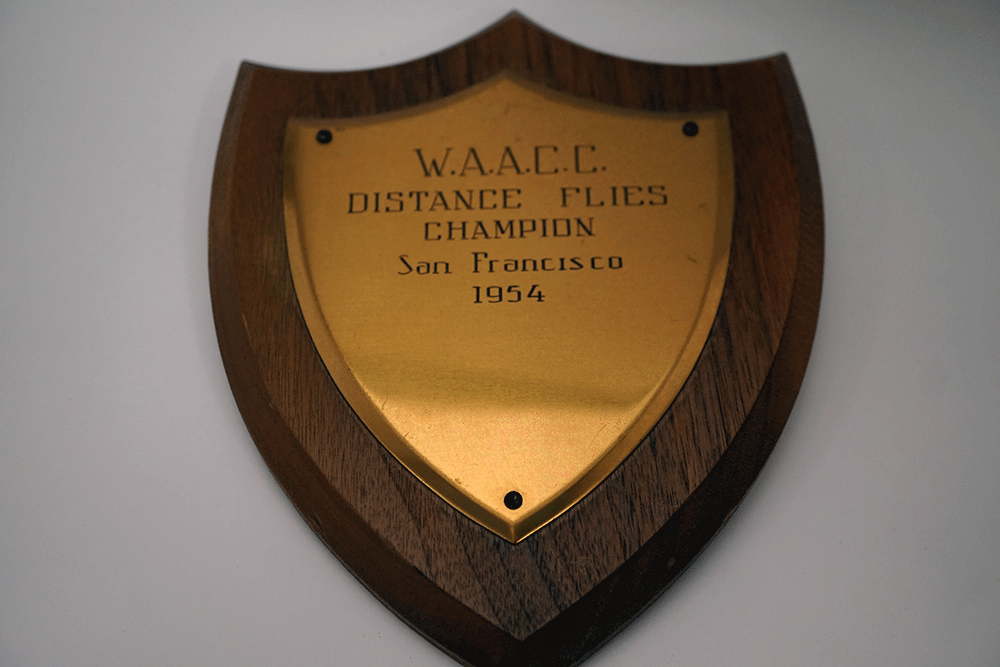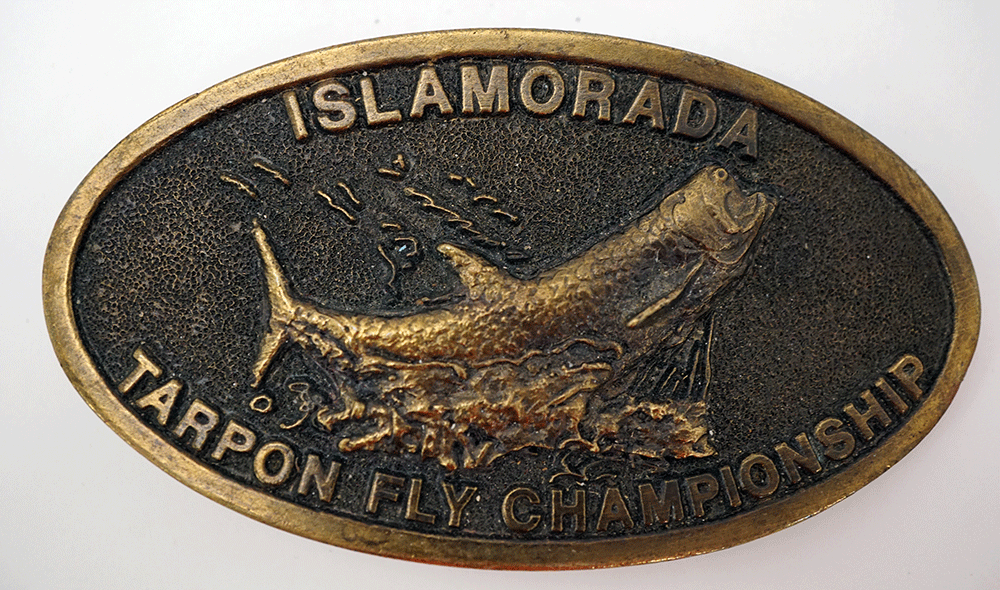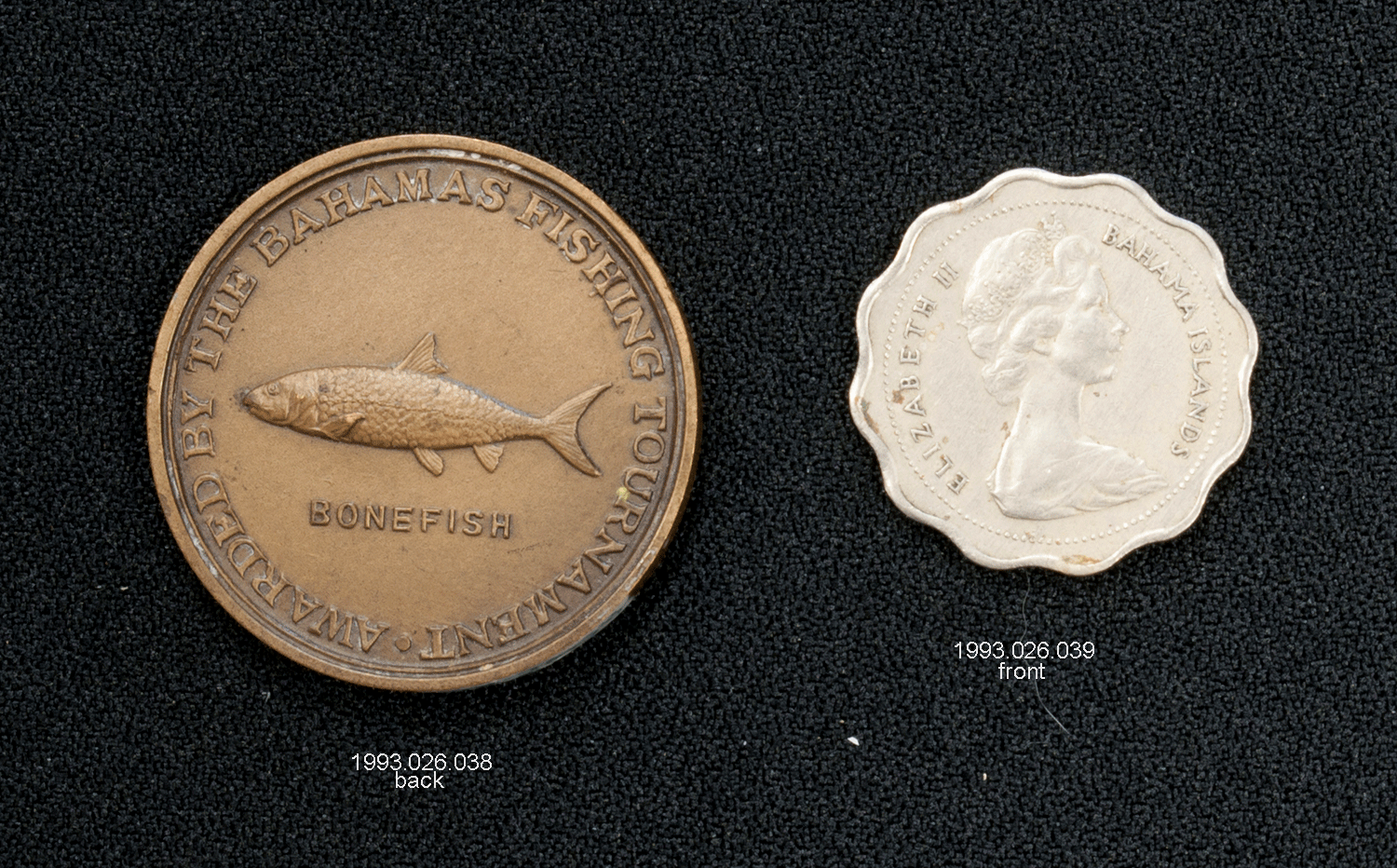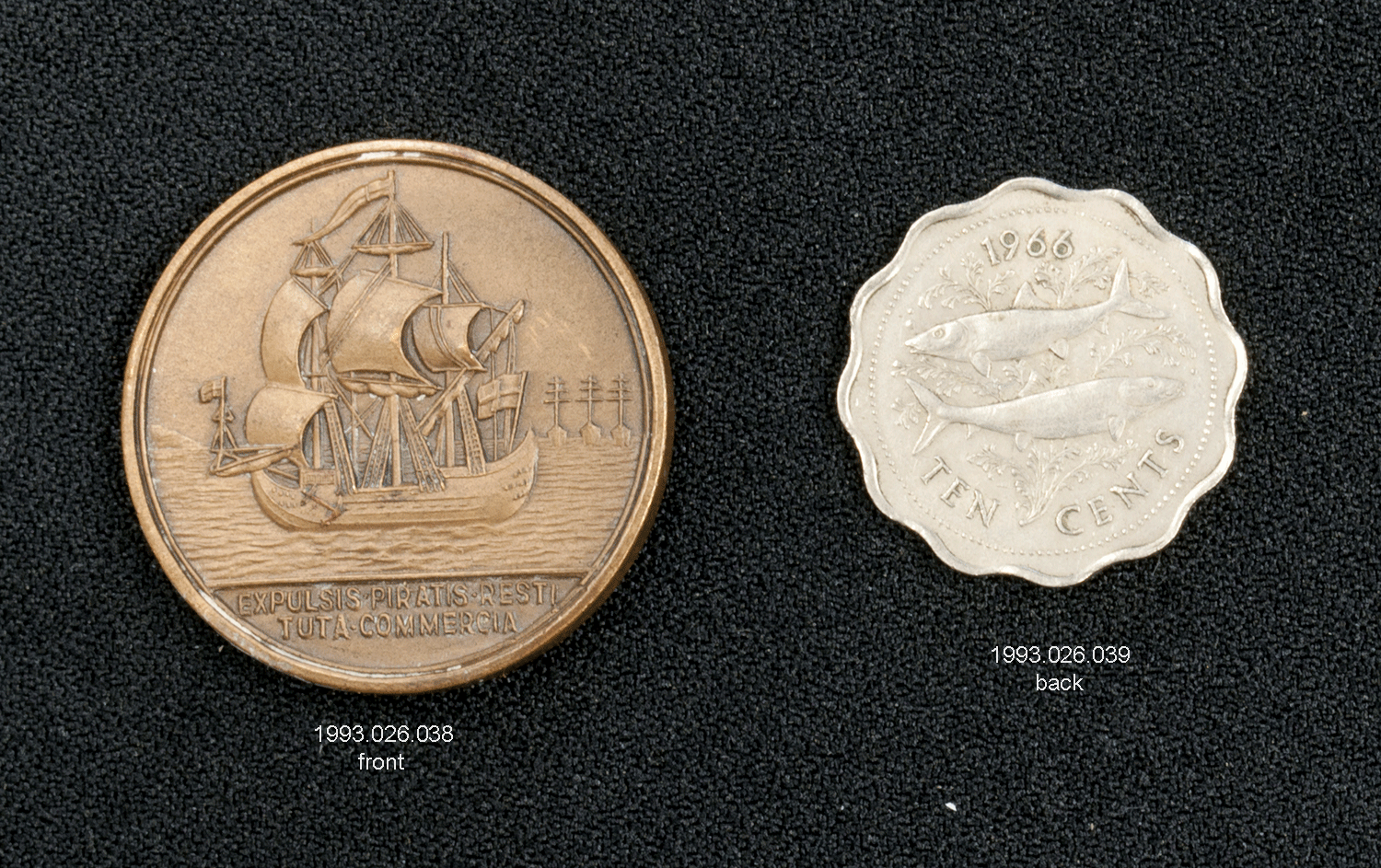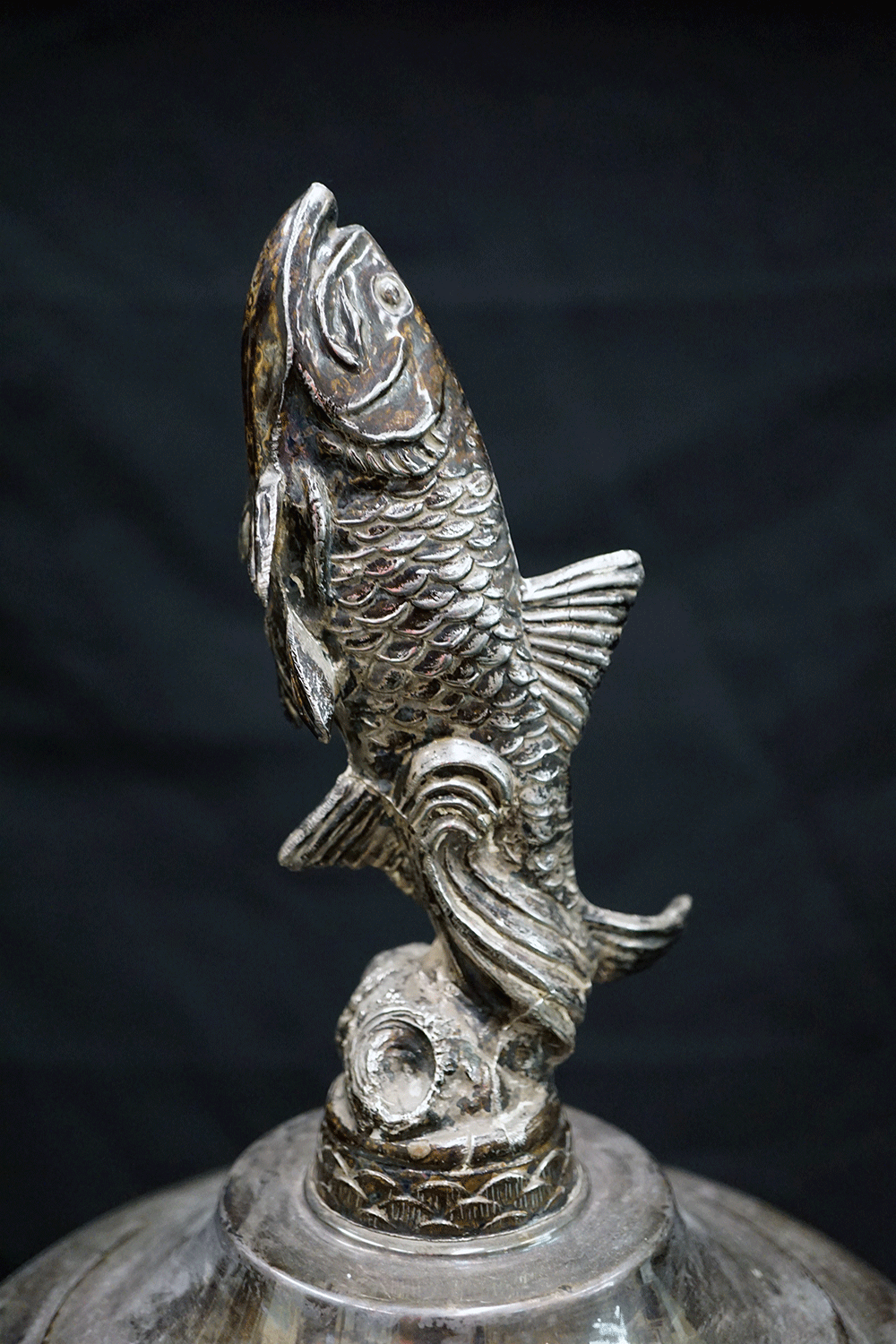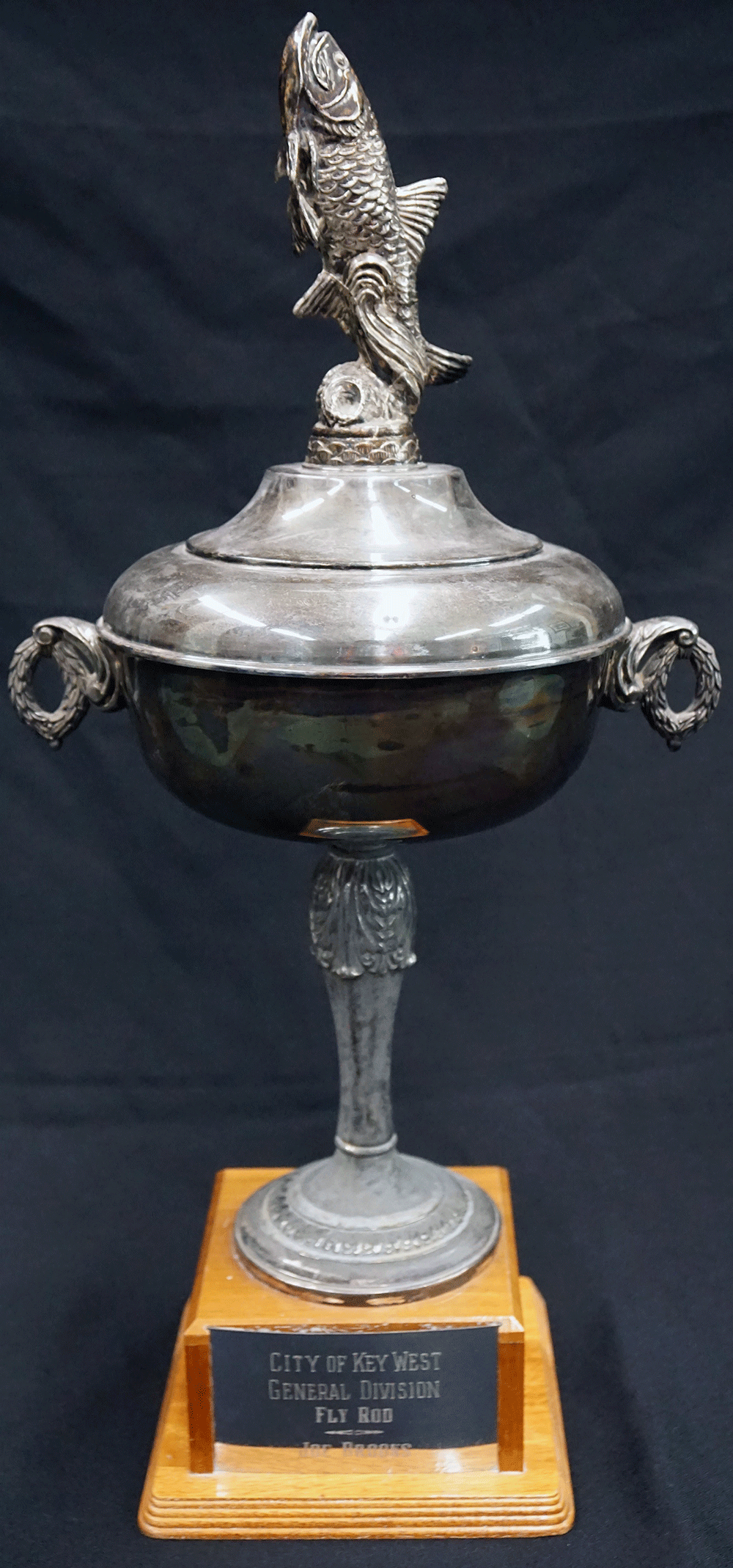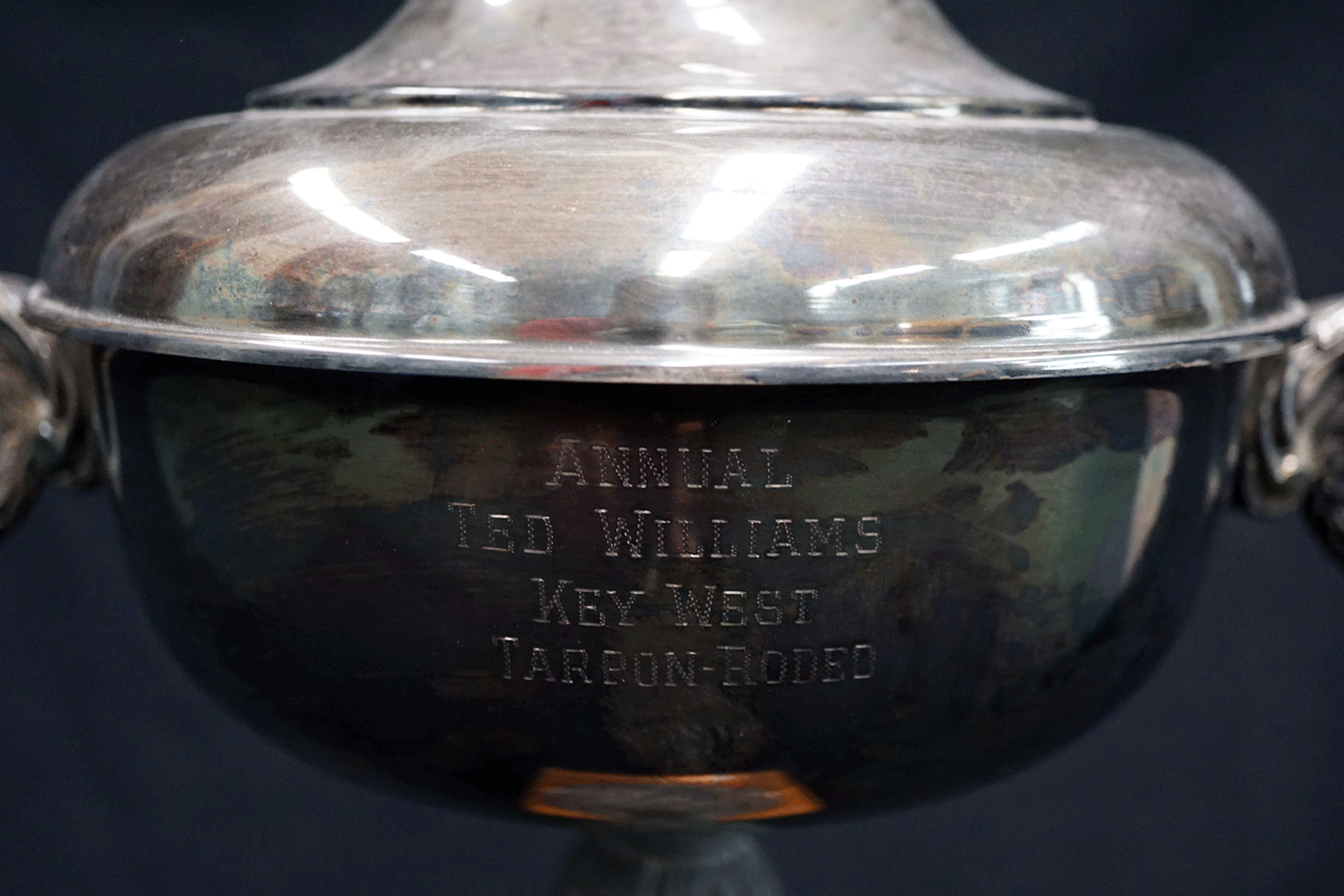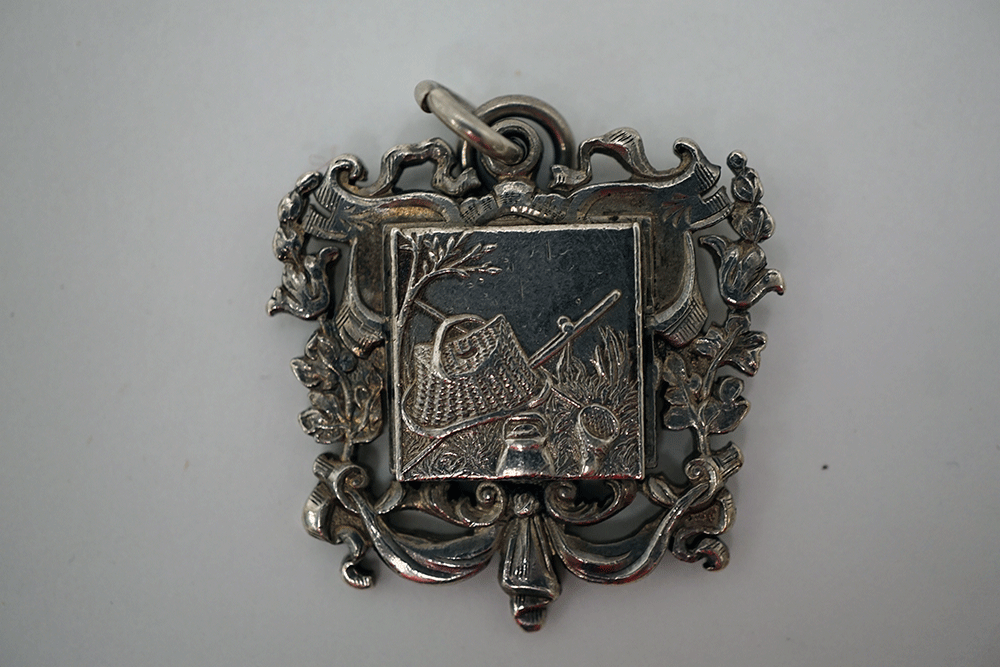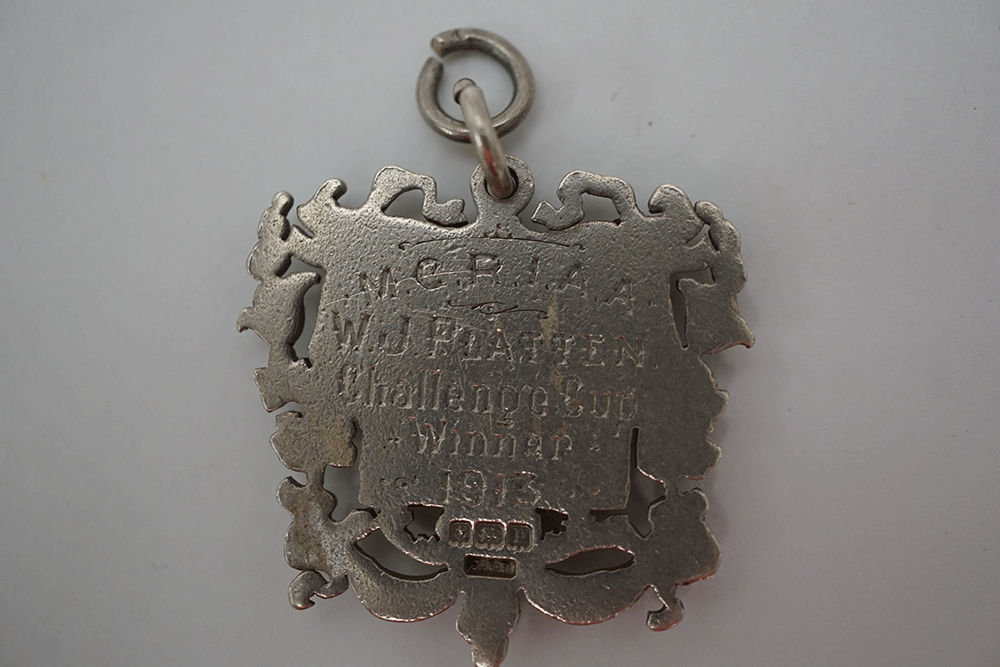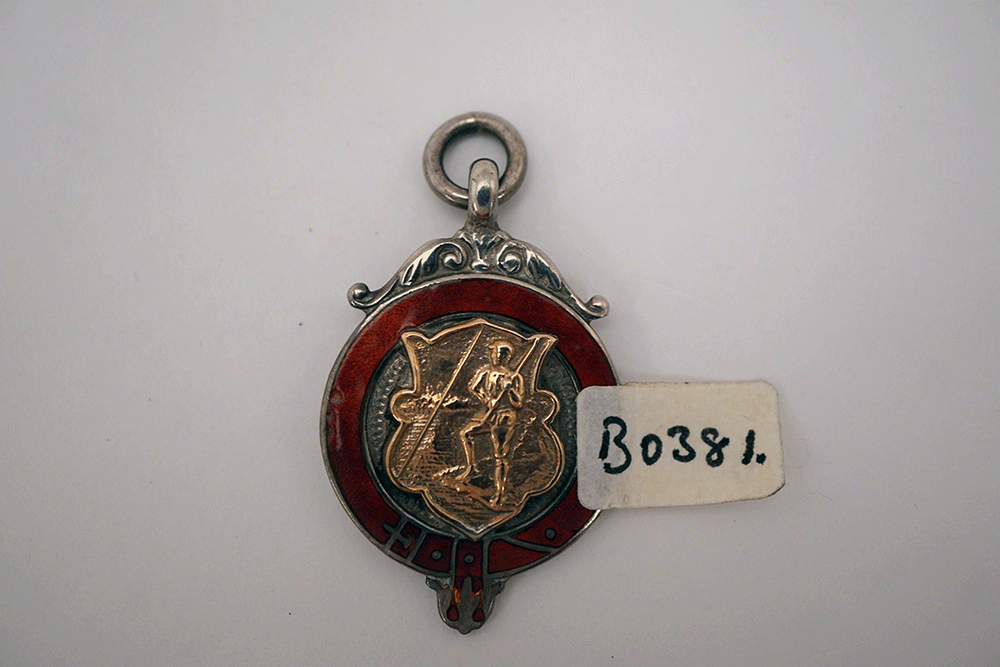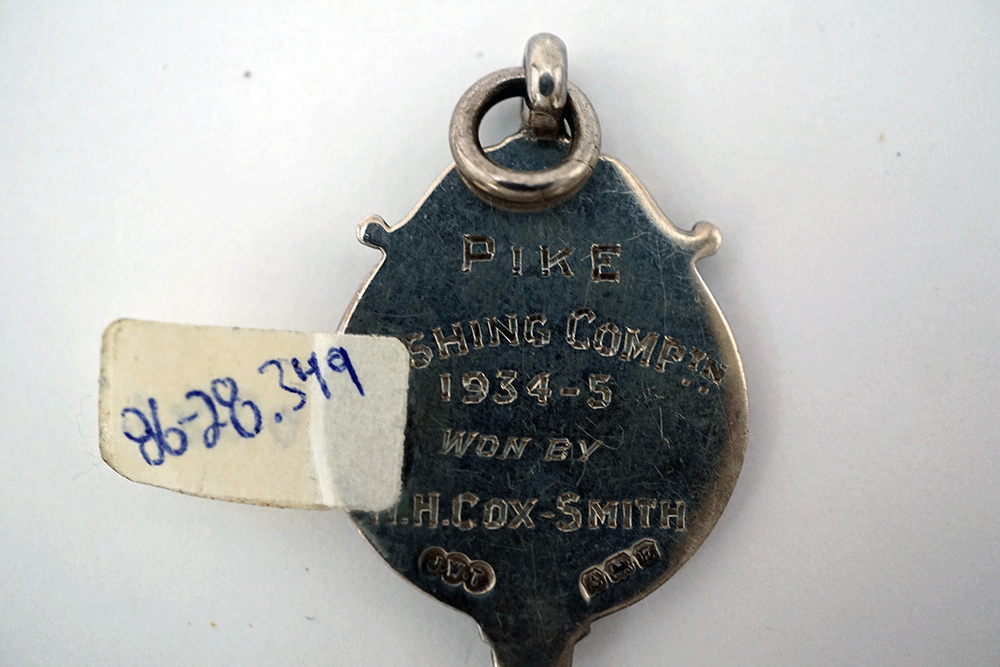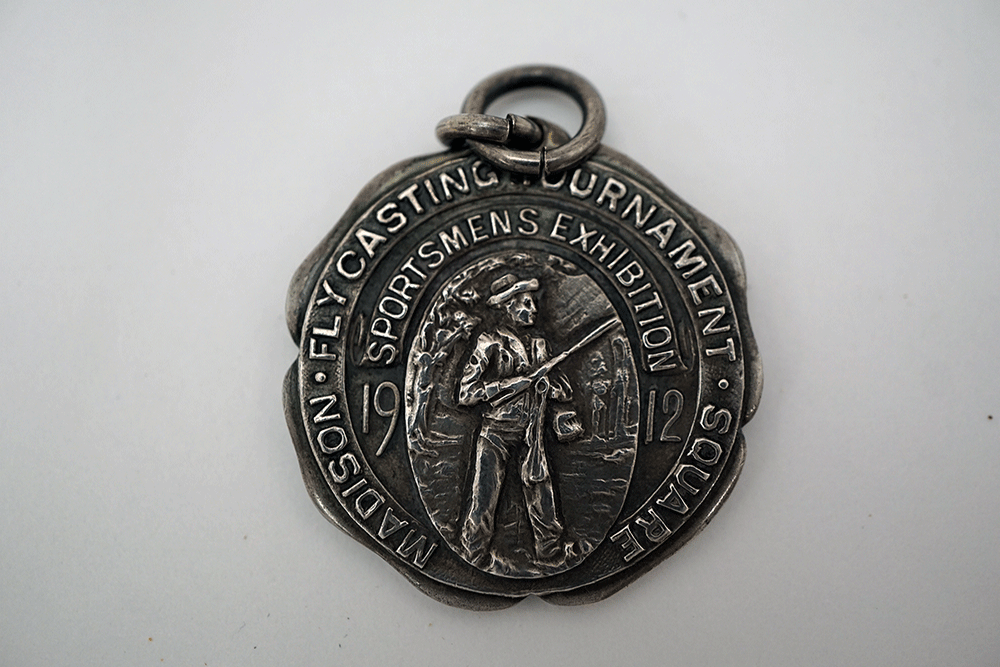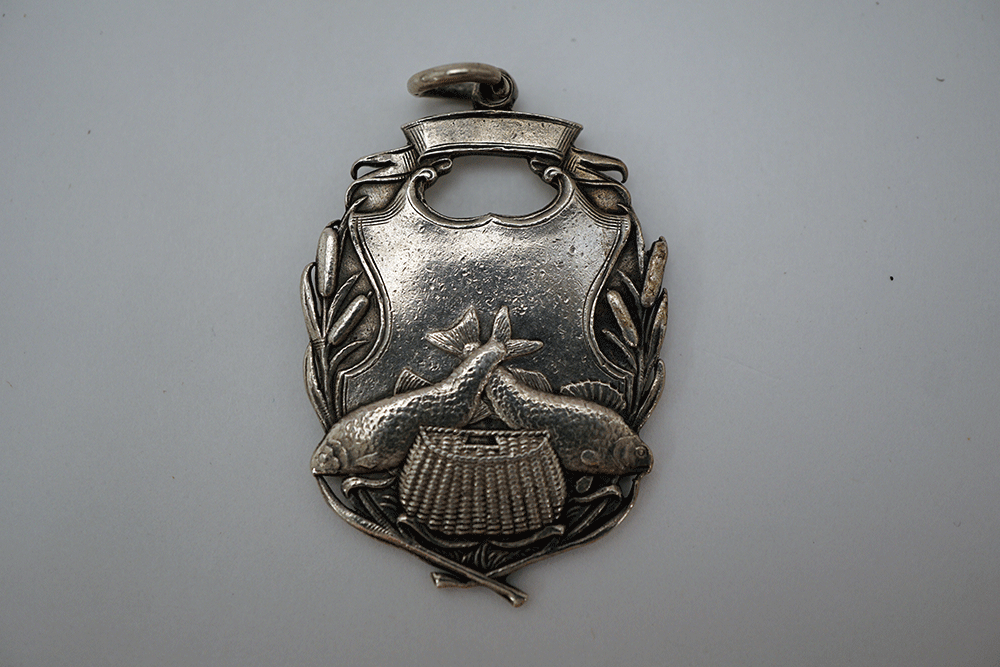Hiram Leonard
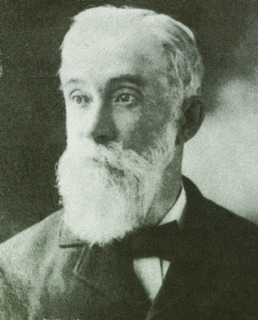
To create a fly rod, you have to have a good understanding of how to cast it. While it is up for debate whether Leonard was actually the first person to build and commercially sell a six-strip bamboo fly rod, there is no doubt about his casting prowess. He took home medals both at home, as shown below, at the 1876 Centennial Exhibition, and abroad, cleaning up with two gold medals and one silver at the 1883 Fisheries Exhibition in London. He also won gold at a Berlin casting competition in 1880 and the silver medal at the Exposition Universelle in France in 1889. All of these medals are in the AMFF collection.
Rio Comparison: Leonidas of Rhodes. He paved the way for future high performance athletes winning 11 individual gold medals in track and field in 152 B.C., a feat that wouldn’t be topped until Michael Phelps broke the record in 2016.
Hiram Hawes
Hiram Leonard passed along his rod making expertise to his son-in-law, Hiram Hawes, who worked in his rod shop. Hawes showed similar aptitude in casting competitions, setting a record of one hundred and two feet in 1887 in switch casting which still stands today (medal shown below). Hiram Hawes also has a record of one hundred and thirteen feet and one inch with heavy, single-handed fly rod and a record of one hundred and thirty-eight feet that he set with his everyday-use salmon rod.
Rio Comparison: Wayde van Niekerk. The South African runner set a world record of 43.03 seconds in winning men’s 400 gold, shattering the previous record of 43.18 set by Michael Johnson in 1999. Can his record stand the test of time as Hawes’s has?
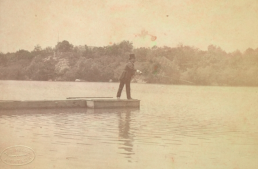
Kay Brodney
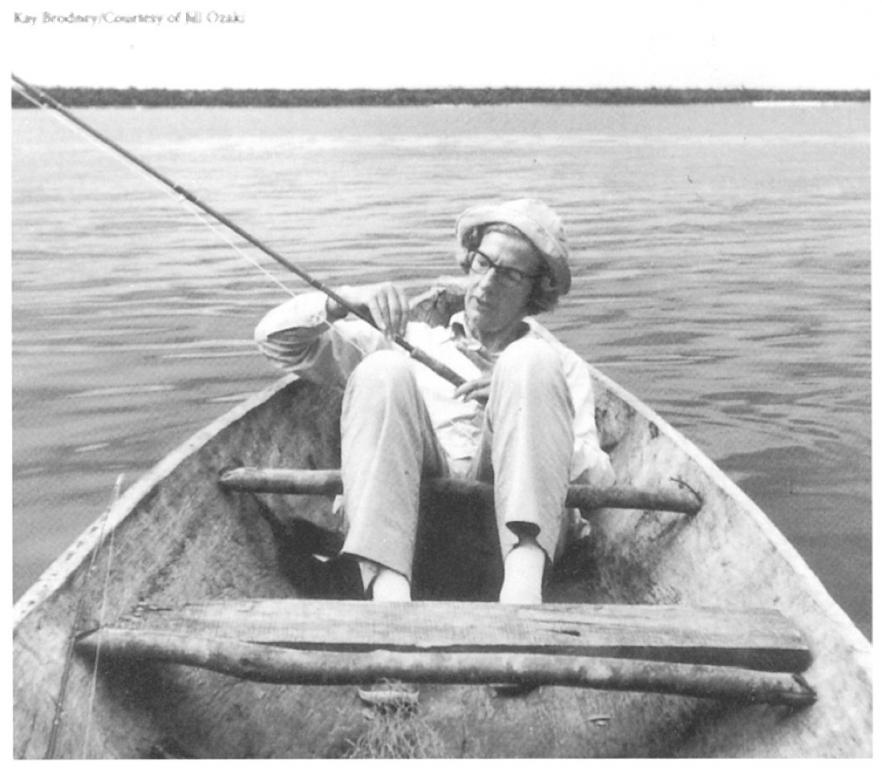
The fly fishing librarian competed in the casting circuit the same time as Joan Salvato Wulff. Although not as well known, Brodney excelled at casting, and in 1950 she entered a western casting tournament. She placed third in the distance-casting competition, but when she went to receive her award, she was told she was disqualified because she was a woman. Although the circumstances surrounding the competition were frustrating, she continued to compete. In 1956, she won the National Association of Accuracy Casting Ladies Dry Fly Accuracy competition in San Francisco. As you can see by the man casting on the statue that Kay received for winning that tournament, the fly fishing world had a ways to catch up, and she played a big part in making that happen.
Rio Comparison: Madison Kocian. Overlooked after teammates Simone Biles, Ally Raisman, Gabby Douglas, and Laurie Hernandez, Kocian has put up solid performances without fanfare at the Rio Games. Just as Brodney went about her business winning casting competitions and pioneering through the jungle, Kocian has been a quiet and important contributor to the American team.
Myron Gregory
The late, great tournament caster hailed from Northern California and was a member of the Golden Gate Angling & Casting Club. Myron Gregory and Art Agnew of Sunset Lines led the push for standardization of fly lines by weight rather than diameter and the adoption of a line classification scheme used by both rod and line manufacturers has greatly simplified fly fishing. The American Museum of Fly Fishing has an extensive collection of his trophies and medals, twenty five in all.
Rio comparison: Michael Phelps. This analogy is an easy one as Phelps walks away from his illustrious swimming career with exactly twenty eight medals, which only slightly surpasses Gregory’s twenty five in our collection. Throw in thirteen individual gold medals (twenty three total golds), which broke a previous record that stood for thousands of years, and you have the most decorated Olympian in history.
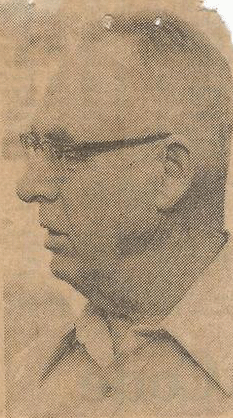
Joe Brooks
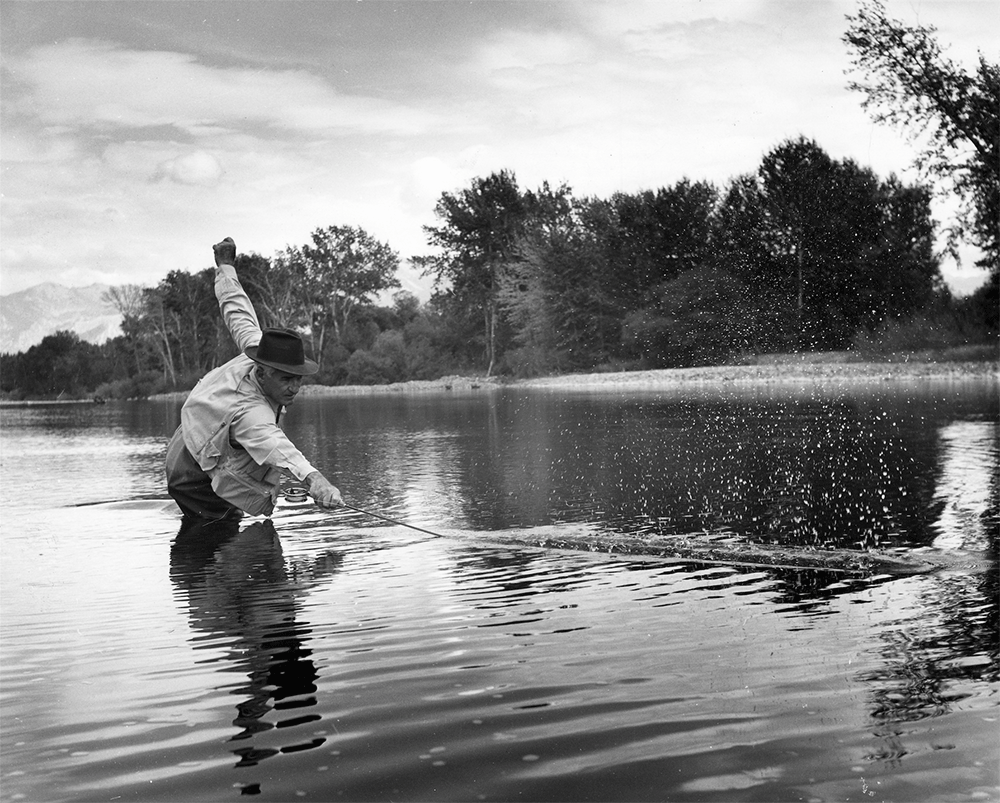
Joe Brooks was an outdoor writer and television personality who connected with many fly fishermen through his writings as editor of Outdoor Life magazine’s fishing section and as co-host of the ABC show, The American Sportsman, along with Curt Gowdy. He influenced many future anglers and served as a mentor to another fly fishing legend, Lefty Kreh. Because Brooks was in the spotlight, people knew to bring their A game when competing against him. In addition to winning the Islamorada Tarpon Fly Championship, Bahamas Fishing Tournament, and the Ted Williams Tarpon Rodeo as seen in the pictures below, the IGFA hall-of-famer set world records for Kawakawa (1958) and Permit (1957).
Rio Comparison: Usain Bolt. The Jamaican track star is a true showman and has a serious knack for finding a camera, but it is his blazing speed and record-breaking performances that will inspire another generation to pick up the sport.


